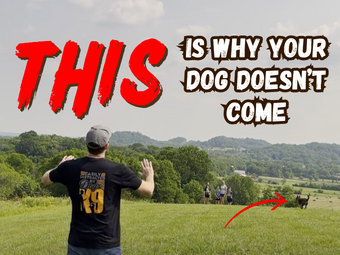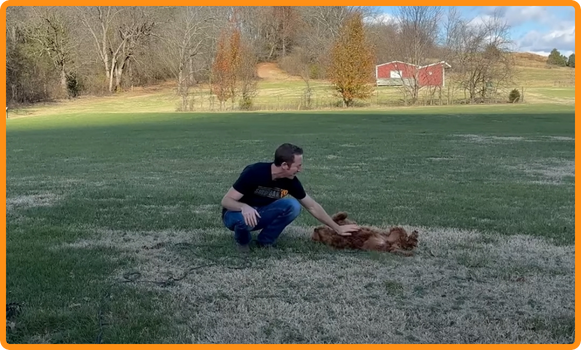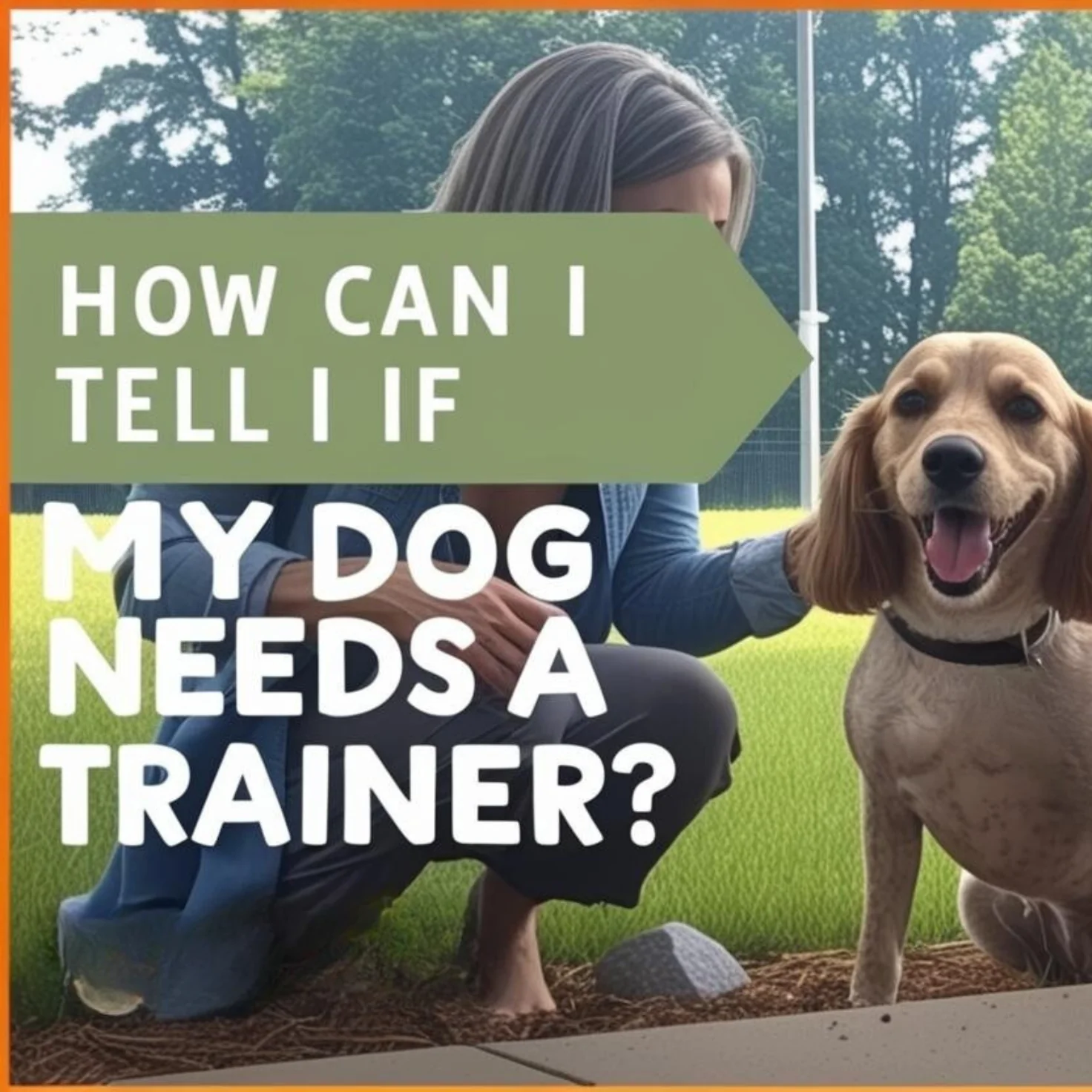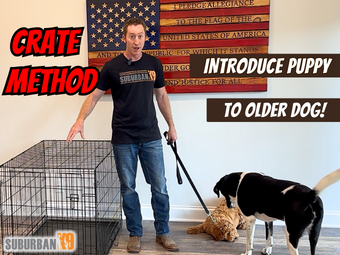How to train a dog to come in 3 Steps
The dream of every dog owner is mastering the perfect recall command. How to train a dog to come is a crucial skill for owners to learn. This command not only bolsters their safety, but also deepens the relationship with their owner. This skill is an essential aspect of responsible dog ownership
Follow these 3 steps and your dog will respond to your calls consistently! Training your dog to come when called requires effort, but consistent training leads to a rewarding life for both you and your dog. This commitment to training is key to a fulfilling relationship with your canine companion
How to Train the Come Command: Step 1
For a first exercise we need to place the dog in a Sit Stay. This gives the dog the best chance to be focused and attentive As we teach something new. One thing we always strive to do is make it as easy for the dog to succeed when we're working on a New Concept.
Going Through the Motions
Once the dog is in the Sit Stay move To the end of the leash and face the dog without putting any pressure. Now take a large step back as you say the dog's name followed by the come command. This body language should help the dog understand what you want from them with this new command. starting with their name serves as an attention getter to once again set them up for success.
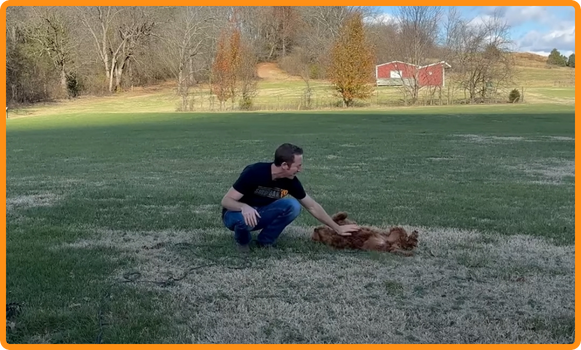
Do this motion when giving the Come Command!
Increase the Distance
When the dog starts moving towards you slowly back pedal to increase the distance they have to walk towards you. This will help them slowly transition to doing it from a longer distance and eventually off leash. Repetition is vital in all of these stages.
Increase the Challenge
When this is consistent, then we will begin dropping the leash to make it a little more difficult. Practice practice practice! Your goal in these training sessions should always be ending with at least three successes in a row. Once is a fluke, two is lucky, three in a row and I'm convinced the dog is understanding what we’re saying.
As for rewarding, we always want to move to just using praise. very often we will never bring treats into the equation. in the video Matt's working with puppy, and this is definitely one of the times where we will begin with treats. While it's good to start training dogs young, there are challenges with their focus.
An eight week old puppy is just not going to have the same capacity as a 6 month or a year old. Treats can help overcome this to begin the training process early. The important part is that you always work to the point where your dog listens consistently without a treat.
Teach the Dog Not to Run Away: Step 2
Introduce the Long Line
- BRASS COLLAR CLIP: Top safety choice!
- WATERPROOF LEADS: The faux leather grain leash is made of biothane material.
- DOG TRAINING LEASH: These durable training leashes for dogs are designed for distance training.
When your dog starts to grasp the come command, it's time to introduce a long line. At Suburban K9, we offer both 50-foot and 100-foot long lines, though some clients prefer crafting their own. The long line's purpose is to prevent your dog from escaping while still providing a sense of freedom. If your dog doesn't respond to the come command, the long line allows you to safely stop them from running off.
Give the dog Freedom
Treating the long line as if it's not there is crucial. Avoid using it to pull your dog towards you. Instead, if they attempt to escape, you can step on the long line and apply a correction. Gradually, we'll phase out the use of the long line, but it's important to take this step slowly and not rush the process.
How to teach a dog to come while using corrections
Discussing corrections, it's important to go into specifics. You must ensure your dog fully understands a command before considering corrections. If you are correcting your dog while they are confused, you can only slow their progress and hurt your relationship.
Our approach to correcting the come command aims to encourage your dog to approach you, not be afraid of punishment. If your dog ignores or runs away upon hearing "come," begin by saying "no" and calmly approach them. Once you reach your dog, take hold of the leash with both hands. As you walk backward, gently tug the leash twice towards you, simultaneously saying "come." Follow this with a single upward tug for the 'sit' command. Unlike the 'stay' commands, there's no need to return your dog to their initial position.
Stop Playing “The Game”: Step 3 How to teach a dog to come
You know the game. It’s every dog's favorite once they get outside and feel that sense of freedom. They get that gleam in their eye, and then they’re off with the zoomies! We love giving dogs this opportunity to stretch their legs and have at it. Unfortunately, we can only do this if we can trust the dog to come to us reliably. Here we work on making sure the come command works even when your pup might feel like playing instead.
Success in fixing this is consistency. The old adage of “Practice makes perfect” is quite true! You should work on this command daily, and slowly introduce more and more distractions over time. There will be natural ups and downs, but don’t get discouraged. As long as consistently reward when they come and interrupt and correct when they don’t, eventually you and you dog will master this!
Why is it Important to Learn How to Teach a Dog to Come?
Regular training of the come command grants dogs greater liberty, the opportunity for off-leash activities, and the ability to confidently explore different settings. A dependable recall is essential in hazardous situations, like when a dog nears a busy street or meets unknown dogs or wildlife. Through mastering this command, dogs learn to quickly heed their owner's call, returning to them despite distractions or allurements. This skill greatly diminishes dangers in unforeseen situations, safeguarding the dog's safety and averting potential mishaps.
Advancing training the come command
Do you want to spend more time with your dog off leash? For our clients who ask us this question, we always point them towards e-collars. We don't like to teach new commands with them, but it's an invaluable tool to help reinforce the come command. If you're looking for an E Collar, check out our top recommendation, the Dogtra Arc!
- ERGONOMIC DESIGN: The design of the ARC receiver is sleek and slim, which allows the collar to strap around the receiver and your dog’s neck seamlessly. It’ll be a comfortable fit for your dog, while also being hardly noticeable.
- IPX9K WATERPROOF CERTIFIED: The ARC is IPX9K waterproof certified, which means it passed the International Protection Marking system. Products are verified if they can stand a close-range high-pressure liquid spray from 4 angles (pressure of 80-100 bars and a temperature of 176°F).
- ¾-MILE RANGE: The range of this training e-collar is perfect for many situations and all simple training commands for your dog. With a range of ¾-mile, this e-collar is great for easy obedience, hunting, and K-9 training. It’s also expandable to up to two dogs so you can get double the amount of training at once.
- PRECISE CONTROL: With 127 correction levels, you’ll have no problem finding the perfect level for your dog with the gradual and precise correction control. The LCD screen is bright and easy to read, while the levels can be adjusted precisely at any time with the Rheostat Dial.
- CORRECTIONS: This e-collar has two different correction types. The first correction type is a Nick (quick ½-second) and the second type is a Constant correction (up to 12 seconds). The e-collar also has a Pager vibration which offers a clear vibration to alert dogs while training. Find the right fit for you and your dog with this dynamic e-collar.
Added bonus
The vibration function can serve to give your dog another way to understand you want them to come back to you, even if they can't hear you because of loud noises in the environment. Learn more about E Collar vibration training here.
The article above contains Affiliate Links from Amazon and other companies. If you visit their site and buy the product, we will get a small commission. Please know that we only recommend products we love and would never recommend a product we think is less than great. We look at and try hundreds of products before we ever recommend them to our clients!
